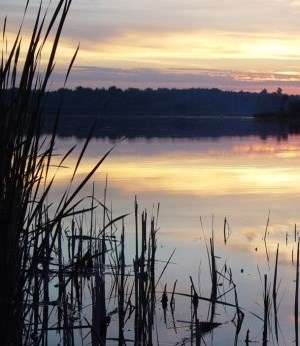Drinking Water Source Protection
 We are committed to keeping our drinking water source safe for our community. We follow the Clean Water Act which guides how drinking water is protected in Ontario.
We are committed to keeping our drinking water source safe for our community. We follow the Clean Water Act which guides how drinking water is protected in Ontario.
Kawartha Conservation is part of the Trent Source Protection Region. The region has five conservation authorities that work together:
- Crowe Valley Conservation
- Ganaraska Conservation
- Kawartha Conservation
- Lower Trent Conservation
- Otonabee Conservation
What is source water protection?
In May 2000, the town of Walkerton, Ontario's drinking water was polluted. A total of seven people died and thousands got sick. After this, the province took action to make sure that all municipal drinking water sources are safe to drink. One of the main suggestions was protecting the water source itself, which is how the source water protection program began.
Implementation
We work with local municipalities to ensure the continued safety of drinking water sources. We help develop building, planning and emergency response plans. We also have an agreement with the City of Kawartha Lakes to run their risk management office. This means that the Risk Management Official works at our office to make sure that policies in the plan are being followed. See our Source Protection Notice for more information about this. Every year, all people who carry out the policies in the plan write reports on their progress implementing the policies.
Source protection plan
The plan is based on complex science, policy development and public consultation. A committee, called a Source Protection Committee guided the writing of the plan. The committee has members from municipalities, businesses, industries, First Nations, landowners and others.
What areas are protected?
There are two main drinking water sources; groundwater from underground aquifers or surface water from lakes or rivers. These water sources have two types of protected areas:
|
Wellhead Protection Areas |
|
These protected areas are around groundwater well systems. These systems get their water from underground aquifers. There are 4 different protected areas around these kinds of systems:
Only activities in the Wellhead Protection Areas A to C can be significant drinking water threats that need to be managed. |
|
Intake Protection Zones |
|
These zones are around surface water systems. These systems get their water from surface water features, like lakes, streams or rivers. There are 2 different protected areas around these kinds of systems:
|
What activities are regulated?
The 22 activities that are regulated under the Clean Water Act are:
- The establishment, operation or maintenance of a waste disposal site within the meaning of Part V of the Environmental Protection Act.
- The establishment, operation or maintenance of a system that collects, stores, transmits, treats or disposes of sewage.
- The application of agricultural source material to land.
- The storage of agricultural source material.
- The management of agricultural source material.
- The application of non-agricultural source material to land.
- The handling and storage of non-agricultural source material.
- The application of commercial fertilizer to land.
- The handling and storage of commercial fertilizer.
- The application of pesticide to land.
- The handling and storage of pesticide.
- The application of road salt.
- The handling and storage of road salt.
- The storage of snow.
- The handling and storage of fuel.
- The handling and storage of a dense non-aqueous phase liquid.
- The handling and storage of an organic solvent.
- The management of runoff that contains chemicals used in the de-icing of aircraft.
- An activity that takes water from an aquifer or a surface water body without returning the water taken to the same aquifer or surface water body.
- An activity that reduces the recharge of an aquifer.
- The use of land as livestock grazing or pasturing land, an outdoor confinement area or a farm-animal yard.
- The establishment and operation of a liquid hydrocarbon pipeline.
How can I help protect our drinking water?
Everyone can help protect our drinking water sources. Things that we do on our properties can impact our own water, our neighbour's water, or even our community's water. There are lots of resources on the Region's website, the Province's website, or Conservation Ontario's website on how to protect our drinking water.
The Kawartha-Haliburton Source Protection Authority
The five conservation authorities in the region represent five Source Protection Authorities. We are in the Kawartha-Haliburton Source Protection Authority. This area covers Kawartha Conservation and extends into Haliburton County. The Source Protection Authority has a Board of Directors who support the Source Protection Committee. The Board is comprised of the Kawartha Conservation Board of Directors, as well as four additional representatives from the lower tier municipalities of Haliburton County.
 Contact us
Contact us
For more information about the drinking water protection program, contact the Source Protection Technician or visit:
- Trent Source Protection Region
- South Georgian Bay Lake Simcoe Source Protection Region
- Conservation Ontario
- City of Kawartha Lakes
- Region of Durham
- Municipality of Trent Lakes
This project is made possible through the support of the Government of Ontario.


